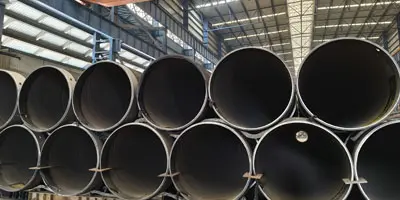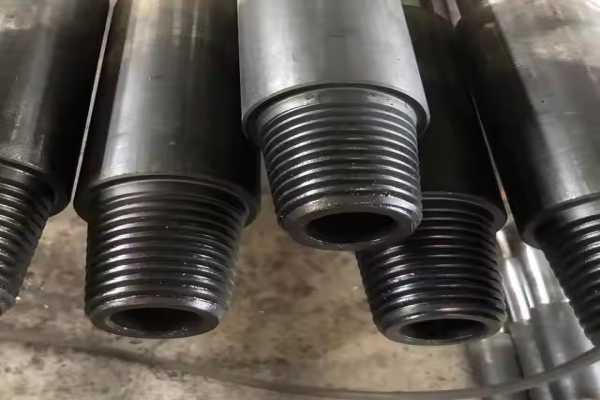The oil drill pipe is an indispensable tool in the process of oil and gas drilling. Its main function is to carry the drill bit and transmit power to ensure the smooth progress of drilling operations. In drilling operations, the oil drill pipe needs to withstand the complex pressure environment from the well, such as formation pressure, the force of drilling fluid, and the torque and impact force generated during drilling. Therefore, the bearing capacity of the drill pipe, especially the pressure resistance, is directly related to the efficiency and safety of drilling operations.
1. Working environment and pressure of oil drill pipe
During the drilling process, the oil drill pipe must not only withstand the pressure of drilling fluid, but also face complex working conditions such as high temperature and high pressure of the formation, shear force at the bottom of the well, and torque from the equipment. These pressures can be divided into two categories: external pressure and internal pressure. External pressure includes formation pressure and the pressure of drilling fluid on the outer surface of the drill pipe, while internal pressure mainly comes from the drilling fluid pressure in the well and the torque transmitted by the equipment.
In addition, in deep well and ultra-deep well drilling, as the depth of the well increases, the deadweight of the drill pipe also becomes a factor that must be considered. Especially in vertical deep wells, the pressure on the lower end of the drill pipe is much higher than that on the upper end, which makes the lower end of the drill pipe prone to bending or breaking. Therefore, oil drill pipes not only need to have sufficient strength to withstand these pressures, but also maintain good toughness and fatigue life in various complex environments.
2. Pressure bearing capacity of oil drill pipes
The pressure bearing capacity of oil drill pipes is closely related to the following key factors:
Material
The material of the drill pipe is generally high-strength alloy steel, and its strength and toughness are further improved by heat treatment process. Commonly used materials include steel grades such as G105 and S135, which have high tensile strength and yield strength and can maintain stability under high pressure. High-quality drill pipe materials not only have good load-bearing capacity, but also can withstand corrosion and high temperature environments.
Diameter and wall thickness
The outer diameter and wall thickness of the drill pipe are important factors in determining its pressure bearing capacity. Generally, the larger the diameter and the thicker the wall thickness of the drill pipe, the stronger its load-bearing capacity. For example, a drill pipe with a diameter of 3.5 inches (about 8.89 cm) can withstand much higher pressure and torque than a drill pipe with a smaller diameter.
Threaded connection
The pressure bearing capacity of drill pipe is also closely related to the thread type at its connection. The quality and strength of the threaded connection determine whether the drill pipe can remain stable under high pressure. The commonly used API thread standards such as NC50 have good tensile properties and wear resistance, which can ensure the connection stability of the drill pipe under high pressure.
3. Drill pipe bearing capacity in API standards
The production and use of drill pipes in the petroleum industry must comply with API (American Petroleum Institute) standards, which strictly stipulate the bearing capacity of drill pipes of different types and specifications. According to API standards, the bearing capacity of drill pipes is usually about 60-75% of its maximum breaking load. This safety margin can ensure the stability and safety of drill pipes in actual use.
Taking the G105 grade drill pipe in the
API standard as an example, its tensile strength range is usually around 105,000 psi (about 724 MPa), while the tensile strength of S135 grade drill pipe can reach 135,000 psi (about 931 MPa). With the support of these high-strength materials, oil drill pipes can withstand static tension of about 450,000 pounds and can operate stably in a working environment with a pressure of 7,500 psi.
4. Other factors affecting the pressure resistance of drill pipes
In addition to the material and geometric dimensions of the drill pipe, other factors that affect the pressure bearing capacity of the drill pipe include:
Drilling depth
As the drilling depth increases, the pressure on the drill pipe gradually increases. In deep and ultra-deep well drilling operations, the bearing capacity of the lower end of the drill pipe must be higher than that in conventional well operations, so a higher strength drill pipe is required.
Drilling fluid density
The density of the drilling fluid directly affects the external pressure on the drill pipe. The higher the density, the greater the pressure generated by the drilling fluid. Therefore, under high-density drilling fluid conditions, the drill pipe needs to have a higher compressive strength.
Torque of drilling equipment
The torque transmitted to the drill pipe by the drilling equipment is also an important factor affecting its bearing capacity. The drill pipe needs to remain stable under the multiple effects of torque, tension and pressure, so the power and torque output of the drilling equipment needs to match the bearing capacity of the drill pipe.
5. Inspection standards for oil drill pipes
In order to ensure the safety and reliability of drill pipes under high pressure, the oil industry has strict inspection standards for the production and use of drill pipes. These standards mainly include the following aspects:
Static tensile test
This test is mainly used to test the tensile strength, yield point and elongation at break of drill pipes to ensure that they have sufficient strength and ductility when subjected to force.
Impact toughness test
It is used to evaluate the fracture resistance of drill pipes when subjected to sudden impact, especially the quality of welded joints. This is particularly important for deep well drilling and high pressure operations.
Hardness test
The hardness of the drill pipe surface directly affects its wear resistance and corrosion resistance, so the hardness test helps to determine the service life of the drill pipe.
Dimensional accuracy test
Includes the detection of the outer diameter deviation, length deviation and joint geometric accuracy of the drill pipe to ensure its stability and interchangeability in actual use.
Chemical composition test
It is used to detect the chemical composition of the drill pipe material, especially the content of ferrite, chromium, molybdenum and other elements, to ensure its corrosion resistance and high temperature resistance.
6. Conclusion
Oil
drill pipe plays a vital role in high pressure, high temperature and corrosive environment. Its pressure bearing capacity mainly depends on factors such as material, diameter, wall thickness, thread connection, etc., and it also needs to meet the requirements of international standards such as API. Through strict testing and reasonable design, modern oil drill pipe can withstand huge pressure while maintaining high strength and high toughness, thus ensuring the safety and efficiency of drilling operations.






 English
English Español
Español بالعربية
بالعربية











 Phone :
Phone :  Whatsapp :
Whatsapp :  Email :
Email : 


